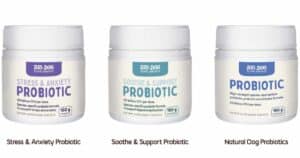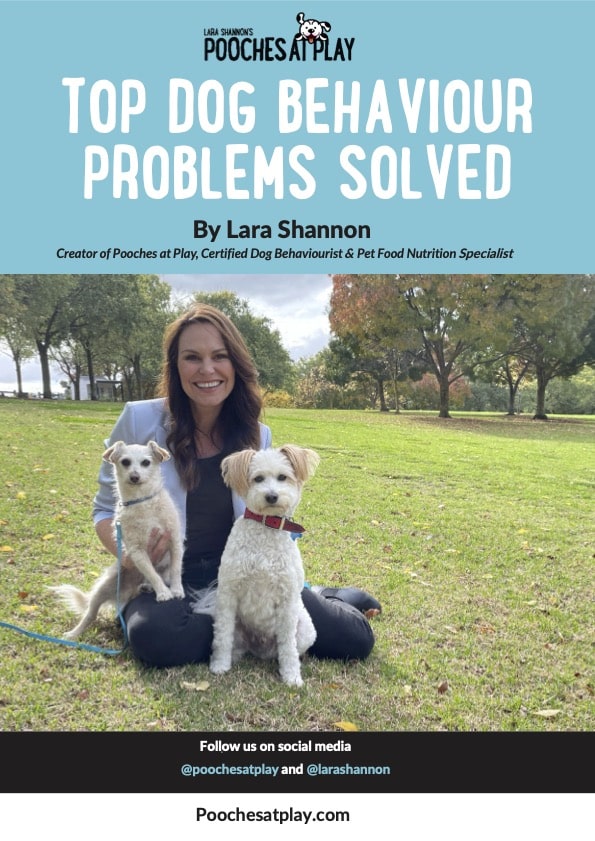

If you notice your dog licking or scratching more than usual, it is important to see your Vet for a proper diagnosis. However, to provide some immediate relief, antihistamines can be used.
They can also be administered if your dog gets bitten by a bee, but do note they only work for around 20% of dogs, so always keep an eye on your dog and at the first sign of pain or discomfort, take them to the Vet.
Just like humans, allergies in dogs can be triggered by various allergens including pollen from grasses, plants and trees, flea allergy dermatitis, dust mites, certain foods, and contact with various grasses and plants.
Symptoms include excessive itching, biting, licking, redness, a rash, hair loss and sometimes skin infections due to the excessive scratching and licking breaking down the skin barrier allowing bacteria or yeast into the skin.
It is important to work with your Vet to try to determine what is causing the itchiness in the first place, but antihistamines may help day to day if the symptoms are mild.
If your dog is often licking their paws, it could also be due to pain from arthritis, overgrown nails, a cut or foreign object, which makes seeing your Vet so important, and antihistamines will not help in these circumstances. For more tips on caring for your dog’s paws, click HERE.
The following antihistamines appear safe in dogs and are often recommended by Vets to try on your dog, along with any other treatments once the cause is identified.
These are the key antihistamines generally recommended as they are 2nd generation options, and are more potent, anti-inflammatory and longer acting. Do note the latter two can cause some sedation.
Telfast (fexofenadine). Available in 60mg, 120 & 180mg tables.
So an 12kg dog for example can have maximum 1 x 120mg tablet. 5-10 mg/kg once daily
*Claratyne (loratadine). 10mg tablets. 5-20 mg once daily
*Zyrtec (cetirizine). 10mg tablets, 1mg/ml & 10mg/ml oral solution.
2.5-10mg once daily†
* possible sedation depending on dog’s size
It is important to note when using antihistamines that they are metabolised mainly in the Liver (except Zyrtec ) – use with care & decrease dose with hepatic disease.
Increase risk of cardiac arrhythmias – use with care with cardiovascular disease (especially Telfast and Hismanal).
Do not combine 2nd generation (except Zyrtec) with ketaconazole, or other azole antifunguls, macrolide antibiotics (erythromycin, lincomycin, clindamycin) especially Telfast.
There are a range of 1st generation antihistamines – your pharmacist will advise on those and you will need to check dosages, but as the 2nd generation offer greater benefit, they are not mentioned here.
Plus, any 1st generation antihistamines are not to be used if glaucoma, cardiovascular disease or urinary retention problems exists due to anticholinergic effect.
It is also important not to combine antihistamines at the same time.
About the Author: Lara Shannon is a certified dog behaviourist and trainer, pet food nutrition specialist, Executive Producer and Host of Pooches at Play on Channel 10 and editor of Poochesatplay.com. Lara also runs her own dog training business in Melbourne’s Bayside area and is the Author of World of Dogs and Eat, Play, Love Your Dog

Benefits of a raw food diet for dogs with skin allergies

Symptoms of a snake bite and treatment for dogs

Benefits of Acupuncture for Dogs

Benefits of probiotics for dogs

Tips for preparing a raw food diet for your pet



Get your paws on Lara Shannon’s best selling books ‘Eat, Play, Love (your dog) and World of Dogs.
Available in Australia, USA, UK and Canada.